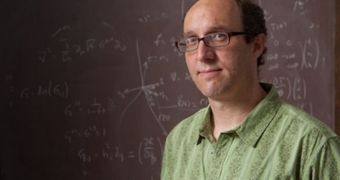University of Houston (UH) Fulbright fellow in chemistry, professor Eric Bittner, plans to start studying black holes using room-temperature superconductors. The expert recently announced that he plans to build a two-dimensional optical analog of a black hole.
The scientific instrument will fit on a tabletop, yet it will be perfectly capable of revealing significant amounts of data related to how a black holes functions, and what some of its basic properties are.
Constructing such an analog device will require the expert and his team to achieve superconductivity at or near room temperature, which will be an amazing feat all by itself. Bittner also holds an appointment as the John and Rebecca Moores professors of chemical physics at the university.
He will be part of an international team of researchers, alongside Carlos Silva, a physics professor at the University of Montreal, in Canada. Bittner's part of the work will be theoretical only, he reveals. Creating the physical experiments will be Silva's job.
“We are studying a quantum state visible to the naked eye that involves the strong coupling between an applied laser field and organic semiconducting material sandwiched between reflective mirrors,” the investigator explains.
“Such states, called polaritons, belong to a class of particles called bosons that can exhibit a quantum collective phenomena called Bose-Einstein condensation where the entire system collapses to a single quantum state where everything moves in sync,” he adds.
It is this condensate that will eventually display the properties of a 2D black hole, the expert adds. The structure will be made up of photons emitted by a tabletop laser. It will not mimic all properties of a black hole, but it should constitute a solid starting point for new studies on the collapsed stars.
The collective effects visible in a Bose-Einstein condensate (BEC) will produce super-radiant emissions, which may be used to create advanced solid-state lasers, and other optical devices. Applications in quantum cryptology are also possible.
One of the most challenging obstacles facing the team is creating the BEC at or near room temperature. This will be the primary goal of the research group.
“I’m hoping Silva’s group can create the condensate. It will be fun to be on hand to see something predicted by my theory come into being. I’m sure I’ll learn a lot about the experimental side of the work, and they’ll learn a lot of the theory,” Bittner concludes.

 14 DAY TRIAL //
14 DAY TRIAL //